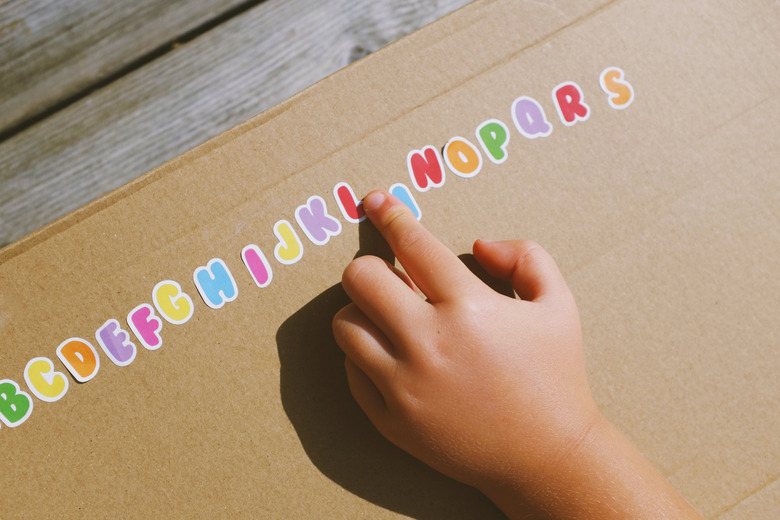How To Remove Stickers From Walls
Placing stickers on the wall may seem like good idea to a child but not so much to the person responsible for removing the stickers later. Applying wall decals is also a popular decorating option, which adds to the potential for stuck-on stickers on your walls. Quickly tearing the stickers off may damage wallpaper or painted walls, or it may leave behind strips of sticker and residue that look even worse. Removing stickers and the adhesive entirely may require several methods. Start with gentle, dry methods first before moving on to liquid-based solutions to protect your walls.
Picking Off Stickers
Picking Off Stickers
Picking at a child's sticker or wall decor stickers may remove them, or at least a good portion of them, from the wall without any other products. Start at one corner and pick at the sticker with your fingernail, working your way toward the center. Once the sticker becomes difficult to lift, start at another corner, continually working your way around the sticker. If it is difficult to remove, gently scrape it with the edge of a putty knife or a butter knife, being careful not to scrape or gouge the wall. The picking-and-scraping method also removes some of the gooey adhesive residue sometimes left behind after the paper or vinyl has been removed.
Getting Stickers Off Walls With Heat
Getting Stickers Off Walls With Heat
Sometimes picking at the sticker isn't enough to remove it entirely. Bits of paper or adhesive remnants often stay behind no matter how hard you work at removing them. Warm what's left on the wall with a hair dryer set to low or medium heat, held 4 or 5 inches from the sticker. Avoid too much heat, especially on painted walls, which can cause the paint to bubble or peel away from the wall. You can also use a clothes steamer to generate heat, but keep in mind that the moisture can damage the wall. Once the adhesive softens, it makes the sticker bits and residue easier to remove. Roll the gooey remains away with your fingers, rubbing from the outside edges of the sticker toward the center to roll the residue onto itself. For more stubborn areas, use a plastic putty knife to scrape the soft adhesive away.
Wet, Then Wipe
Wet, Then Wipe
Several liquids can help loosen the adhesive, but the moisture can also damage some wall surfaces. Painted walls may become damaged from liquids, especially if they're covered in flat paint. The more gloss the paint has, the more durable and easier it is to wash with liquids. Always test the liquid you choose on an inconspicuous area first to ensure it doesn't damage your wall covering. Use as little of the liquid as possible to loosen the sticker without saturating the wall.
Vinegar helps dissolve the remnants of paper-based stickers and stubborn adhesive residue, but it's not good for all wall surfaces. Vinegar is best for non-porous surfaces such as glazed tile, sealed paneling and some washable paints. Fold a paper towel and pour a small amount of white vinegar on it, holding it over the sticker area for a minute or so. Lift the towel and pick or scrape the residue. If it's still stubborn, apply the vinegar again. You can also use a mix of hot water and a small amount of dishwashing liquid. Spray or sponge on a small amount of the liquid. Yet another option is liquid fabric softener mixed as two parts water to one part softener. Fabric softener can leaves streaks on your wall, so use it in small areas and wash it well.
Residue Remover
Residue Remover
If you've done your best to remove the sticker without moisture, but it still won't come off the wall entirely, a citrus-based adhesive remover finishes the job. Apply a small amount of the citrus product to the tip of a cotton swab and rub it over the sticker remains, keeping the liquid limited to the sticker area as much as possible. After a few minutes, wipe away the residue with a dry paper towel or pick at it with your fingers; then wipe it up. Apply a slightly damp paper towel to the area afterwards to remove the citrus product. Test the citrus substance in an inconspicuous area first, as it may leave behind a greasy residue on porous wall finishes.
Getting stickers off walls can be challenging, but you have several methods to help. Always start with the easiest option with the least chance of damage to the wall.
